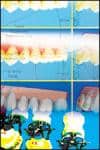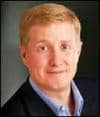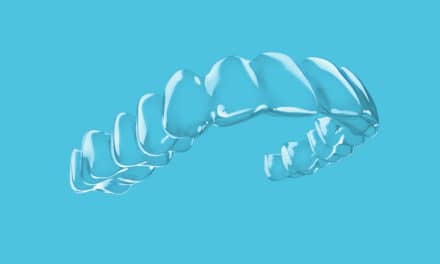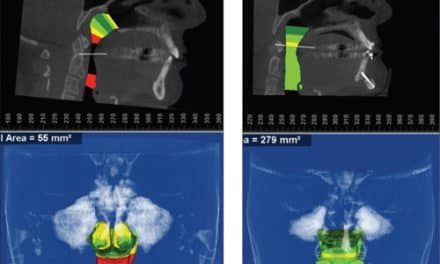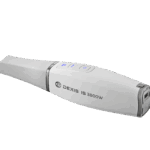by Orhan C. Tuncay, DMD; Scott Nord, DMD; Christopher Nord; Timothy Yu, DMD; and John Kim, DDS
What determines whether they work or not?
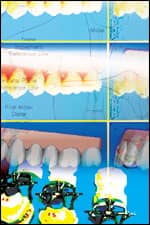
The scope of orthodontic treatment with clear aligners has widened considerably since their earlier days. Perhaps the single most important reason for this broader applicability is the clinician’s confidence; but innovations in attachment design and manipulation of the aligner plastic cannot be ignored. Obviously, improvements need to be tested to be labeled as evidence-based advances. Unfortunately, evidence in clinical sciences is derived from randomized clinical trials conducted with large groups of patients, and at a very high cost. Until clinical orthodontic treatment outcomes become a priority area in the eyes of funding agencies, most of the data will come from small-scale, graduate-student-level studies that are departmentally funded (at times, with the aid of a company). Yet it is a good sign to observe the level of interest in braceless orthodontics by both children and adult patients.
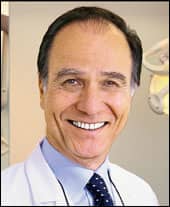 |
| Orhan C. Tuncay, DMD |
Advances in any treatment modality are best made if elements of the treatment system are understood. In the current absence of much evidence, the clinician will rely more on an abundance of tips and techniques. In the case of Align Technology Inc, research and development is high priority. The company expects to see, as early as this year, proven, useful additions to the system. Meanwhile, in the hands of the experienced clinician, the clear aligner can produce the same treatment result as other, conventional orthodontic appliances, both dentally and facially. Clearly, teeth don’t know what is pushing them; they just move. They are not brand-name conscious.
Aligners and Biomechanics
The biggest challenge in moving teeth in the precise, desired direction is adjusting the point-of-force-application. Specifically, whether the aligner touches the tooth at the occlusal, the gingival, or fully “cups” the entire surface will determine how the tooth will move. This point-of-force-application concept is no different in fixed appliances. Principles of physics or biomechanics do not change because of an appliance. The challenge is how to apply the force systems we already know, using the aligner plastic. A couple, torque, or force vector that goes through the center of rotation all yield different results.
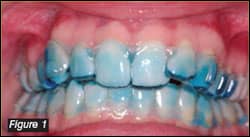
Our understanding of biomechanics is generally based on a single tooth, with a single root, that receives a single force vector. When teeth adjacent to that single tooth are added to the equation, then understanding the biomechanics of such complexity becomes a formidable challenge. Not only the adjacent teeth, but occlusal forces too, alter, second-by-second, even in the most carefully designed force systems. Issues such as changes in force application, material properties, duration of application, and the like need to be understood before any clinical trial can be conducted with a large patient population. It is also known that many medical and dental procedures are technique-sensitive. In this context, technique could be the clinical wisdom of the orthodontist, his or her manual element, or simply the expectations of the clinician.

For the time being, we must find solace in studies of model systems and pooled clinical experience. These are the first steps that lead to forming a plethora of hypotheses.
Blame the Adjacent Teeth
Recently, at Temple, we’ve suggested that if the aligner is not tracking well on one tooth, as commonly is the case for the maxillary lateral tooth, it could be due to the behavior of adjacent teeth. In other words, the adjacent teeth have not moved out of the way enough to allow the lateral tooth to track. Clearly, ClinCheck and biological response of periodontal tissues work differently.
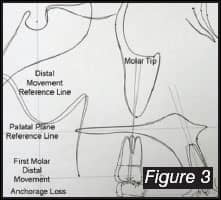
In the example shown in Figure 1, the aligner looks like it is not fitting around the laterals, but the culprit is the canine teeth; they have not moved out of the way. Note the (white) pressure points.
It is conventional wisdom that aligners do not torque roots effectively. But Figure 2 shows that it is possible to place attachments to generate a couple-type force system and create torque on the root. In the typodont model, the root of the incisor tooth can be torqued with the aid of beveled attachments placed on the lingual and labial surfaces. The left column is the initial view, and the right column shows the root having been torqued.
Can the molars be moved distally? According to the data generated by Tim Yu, for every two distance units of distal movement of molars, the anchorage teeth move forward by one distance unit. This is not dissimilar to the results you get with Pendulum or Distal Jet-type appliances.
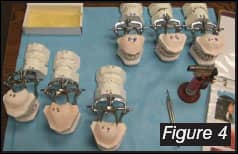
How Do Aligners Perform, and Why?
Figure 3 shows that aligner performance is marginally less than the other two types of noncompliance appliances. It could be due to the lack of palatal tissue anchorage with the aligner mechanics.
Is it possible that aligners do not perform well because clinicians do not fully trust them? Do the clinicians expect more from fixed appliances than they do from aligners?
Figure 4 shows that experienced fixed-appliance orthodontists expect more from fixed appliances and less from aligners. This was exhibited in the positions in which they placed teeth in the wax setup. Interestingly, whereas the actual performance of aligners exceeded their expectations, fixed appliances disappointed them.
Currently, these tidbits of knowledge are being developed. Meanwhile, based on personal experience and our previous publications, it is important to make certain assumptions about aligner treatment:
- Easy cases are easy with aligners, but difficult cases will be difficult. Extraction cases, for example, invariably need a brief period in fixed appliances.
- Root tip movements, currently, require fixed appliances.
- Aligner performance is most notably affected by patient compliance, and secondarily by changing aligners before the previous aligner has done its job fully.
- If a hammer (aligner) is all we’ve got, then the world is full of nails (crooked teeth).
Orhan C. Tuncay, DMD, is chairman, program director, and professor of the Temple University Department of Orthodontics. He is the editor of three orthodontic journals: Orthodontics & Craniofacial Research, Progress in Orthodontics, and Cases and Commentaries in Orthodontic Technology. He has private practices in Philadelphia and Fairless Hills, Pa. He can be reached via e-mail at or through his Web site, www.rittenhouseortho.com.
Scott Nord, DMD, is a post-doctoral student at the Temple University Department of Orthodontics. He can be reached at
Timothy Yu, DMD, can be reached at
John Kim, DDS, can be reached at

